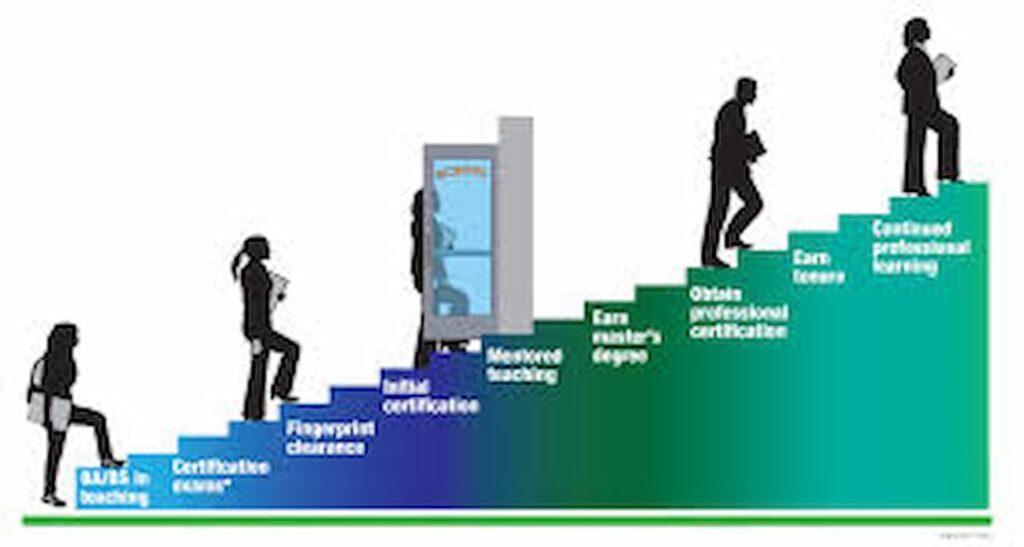A Bachelor’s degree in Education is the foundation for a rewarding career in teaching and other educational roles. Whether you dream of teaching in a classroom or pursuing educational leadership, this guide provides a clear, step-by-step process to obtain your degree and achieve your career goals.
Step 1: Research Education Degree Programs
The first step is to explore the available programs and select one that aligns with your career aspirations. Here’s how:
- Identify Your Focus:
- Decide if you want to specialize in early childhood, elementary, secondary, or special education.
- Consider whether you want to teach specific subjects, such as math, science, or English.
- Choose Accredited Institutions:
- Ensure the college or university is accredited to meet certification and licensure requirements.
- Compare Program Features:
- Look at curriculum, teaching methods, internship opportunities, and program length.
Researching thoroughly ensures you select the right program for your career path.
Step 2: Meet Admission Requirements

Education programs typically have specific admission requirements. Prepare the necessary documents and qualifications:
- High School Diploma or Equivalent: Ensure you have completed high school or earned a GED.
- Standardized Test Scores: Submit SAT or ACT scores if required by the institution.
- Transcripts and Letters of Recommendation: Provide official transcripts and letters from teachers or mentors.
- Application Essay: Write a compelling essay about your interest in education and teaching.
Meeting these requirements increases your chances of acceptance into a quality program.
Step 3: Enroll in the Program
Once accepted, enroll in your chosen program. Here’s what to expect:
- Select Your Classes: Work with an academic advisor to choose foundational courses, such as child development, learning psychology, and classroom management.
- Attend Orientation: Participate in orientation sessions to familiarize yourself with the campus and program structure.
- Plan for Finances: Arrange for tuition payments, financial aid, or scholarships to support your studies.
Enrollment is the official start of your journey toward a teaching career.
Step 4: Complete General Education Courses
Bachelor’s programs include general education courses alongside education-specific subjects. These may include:
- English and Writing
- Mathematics
- History and Social Sciences
- Natural Sciences
These courses develop a well-rounded knowledge base essential for teaching.
Step 5: Focus on Education-Specific Coursework
As you progress, your program will emphasize courses tailored to teaching and education. Examples include:
- Teaching Methods: Learn strategies for engaging students and delivering effective lessons.
- Curriculum Development: Understand how to design lesson plans and educational materials.
- Classroom Management: Gain skills to maintain a positive and productive learning environment.
- Educational Technology: Explore tools and software to enhance teaching and learning.
These courses prepare you for the challenges and responsibilities of a teaching role.
Step 6: Participate in Student Teaching
Student teaching is a critical component of earning a Bachelor’s degree in Education. It provides hands-on experience in a classroom setting:
- Work Under a Mentor Teacher: Assist an experienced teacher while observing their methods and practices.
- Teach Lessons Independently: Gradually take on teaching responsibilities to build confidence.
- Receive Feedback: Use evaluations from mentors and supervisors to improve your skills.
Student teaching bridges the gap between theory and practice, ensuring you’re ready for the real-world classroom.
Step 7: Pass Certification Exams
After completing your degree, you’ll need to pass state-specific certification exams to become a licensed teacher. Common tests include:
- Praxis Exams: Assess your subject knowledge and teaching skills.
- State-Specific Exams: Some states have unique certification requirements.
- Background Checks: Ensure you meet ethical and legal standards for working with children.
Certification is essential for legally working as a teacher in public schools.
Step 8: Apply for Teaching Positions
With your degree and certification, you’re ready to start your career:
- Create a Strong Resume: Highlight your education, student teaching experience, and skills.
- Network: Attend job fairs and connect with school administrators.
- Search Job Boards: Use platforms like Teach.org and local school district websites to find openings.
- Prepare for Interviews: Practice common interview questions and demonstrate your passion for teaching.
Landing your first teaching position is a significant milestone in your journey.
Step 9: Continue Professional Development
Education is a lifelong learning process. Stay updated and enhance your career by:
- Attending Workshops and Seminars: Learn new teaching techniques and trends.
- Earning Advanced Degrees: Pursue a Master’s degree for leadership roles or specialized fields.
- Joining Professional Organizations: Network with peers and access resources through groups like the National Education Association (NEA).
Continuous improvement ensures long-term success and growth in your career.
Final Thoughts
Earning a Bachelor’s degree in Education is a structured yet rewarding journey that leads to a fulfilling career in teaching. By following these steps, from selecting the right program to continuous professional development, you can achieve your dream of shaping the future of students and making a positive impact on society.